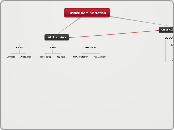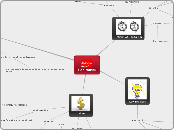Management
The Solar System is the gravitationally bound system of the Sun and the objects that orbit it, either directly or indirectly. Of the objects that orbit the Sun directly, the largest are the eight planets, with the remainder being smaller objects, the dwarf planets, and small Solar System bodies.
Planning and strategic management
Saturn is known most for its rings.
Galileo Galilei first thought it was an object with three parts: a planet and two large moons on either side.
Not knowing he was seeing a planet with rings, the stumped astronomer entered a small drawing — a symbol with one large circle and two smaller ones — in his notebook.
The rings are made of ice and rock and scientists are not yet sure how they formed. The gaseous planet is mostly hydrogen and helium.
Frontline managers
How long does it take for Saturn to go around the sun?
Opperational planning
Human resources requirements
Delivery schedules
Production runs
Routine tasks
Middle-level managers
A planet's day is the time it takes the planet to rotate or spin once on its axis.
Write down Saturn's day measured in Earth days.
Tactical planning
New manufacturing unit
Installation of new
New product desing
Top-level managers
Strategic planning
Contributing to society
Improving profitabily
Increasing market shores
Achieving growth
The external and internal environment
Neptune is about the size of Uranus and is known for supersonic strong winds.
Neptune is far out and cold.
The planet is more than 30 times as far from the sun as Earth.
Neptune was the first planet predicted to exist by using math, before it was visually detected. Neptune is about 17 times as massive as Earth and has a rocky core.
Organization
Neptune has thirteen moons that we know of and one more waiting for confirmation.
The largest moon is slightly smaller than Earth's Moon and has active volcanoes which erupt like geysers and eject nitrogen frost over the surface.
Name this moon and at least 4 others.
Benchmarking
Forecasting
Scenario development
Environmental scanning
Internal Environment
How long does it take for Neptune to go around the sun?
Climate
Values
Culture
Competitive Environmental
A planet's day is the time it takes the planet to rotate or spin once on its axis.
Write down Neptune's day measured in Earth days.
Suppliers
Buyers
New entrants
Rivals
Macroenvironment
Natural ecology
Social issues
Economy
Managerial decisions making
Uranus is an oddball. It has clouds made of hydrogen sulfide, the same chemical that makes rotten eggs smell so foul.
It rotates from east to west like Venus. Its tilt causes extreme seasons that last 20-plus years, and the sun beats down on one pole or the other for 84 Earth-years at a time.
Methane in the atmosphere gives Uranus its blue-green tint. It also has 13 sets of faint rings.
Management decision process
A planet's day is the time it takes the planet to rotate or spin once on its axis.
Write down Uranus's day measured in Earth days.
Evaluate decision
Implement the decision
Evaluate alternatives
Generate alternative solutions
Identyfing and diagnose the problem
When you make a decision it exits
Conflict
Lack of structure
Uncertainty
Risk
Managing and performing
Mars is a cold, desert-like place covered in dust. This dust is made of iron oxides, giving the planet its iconic red hue.
Mars shares similarities with Earth: It is rocky, has mountains, valleys and canyons, and storm systems ranging from localized tornado-like dust devils to planet-engulfing dust storms.
Functions of management
How long does it take for Mars to go around the sun?
Controlling
Determinate the behavior or supervise the running
Leading
Guidance or leadership
Organizing
Make arrangements or preparations for an event or activity
Planning
Process of thinking about the activities required to achieve a desired goal
Competitive advantages
A planet's day is the time it takes the planet to rotate or spin once on its axis.
Write down Mars's day measured in Earth days.
Sustainability
Avoidance of the depletion of natural resources in order to maintain an ecological balance
Cost
An amount that has to be paid or spent to buy or obtain something
Speed
The time it take product or service to arrive
Service
Helping or doing work for someone
Quality
The degree of excellence of something
Innovation
The action or process of innovating
Challenges in the competitive world
Our Solar System has eight “official” planets which orbit the Sun.
Each planet is at a different distance from the sun. Name its position.
Collaboration
Work jointly on an activity, especially to produce or create something
Knowledge
Skills acquired by a person through experience
Information
Facts
Technology
The application of scientific knowledge for practical purposes
Globalization
Process of interaction and integration among the people









